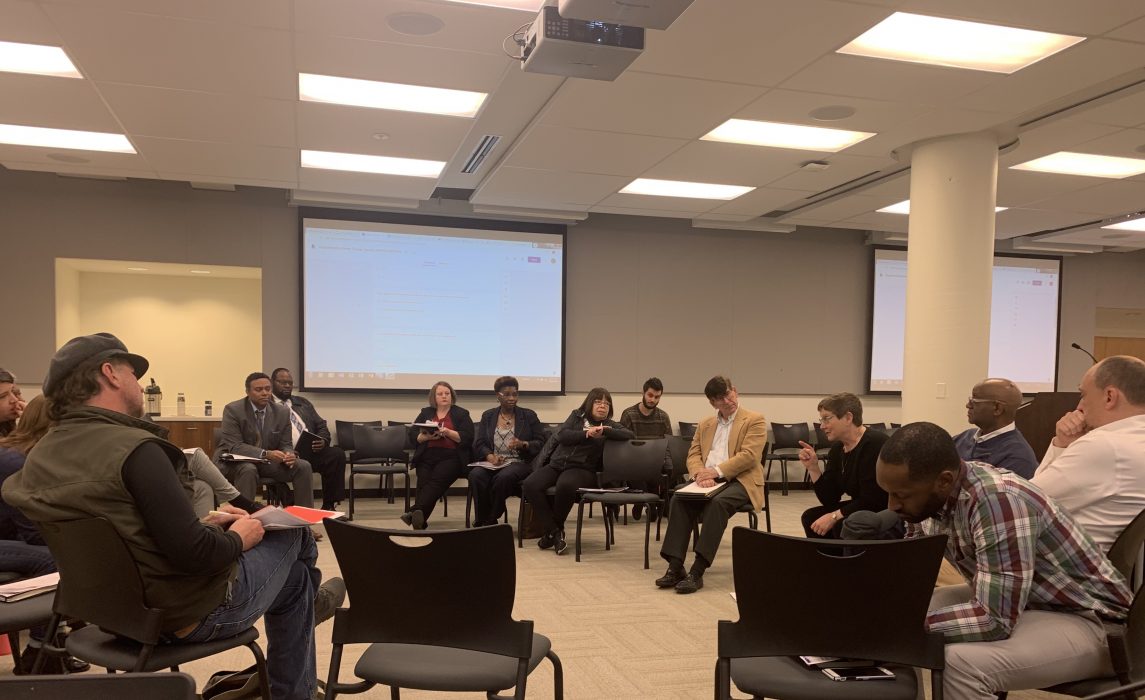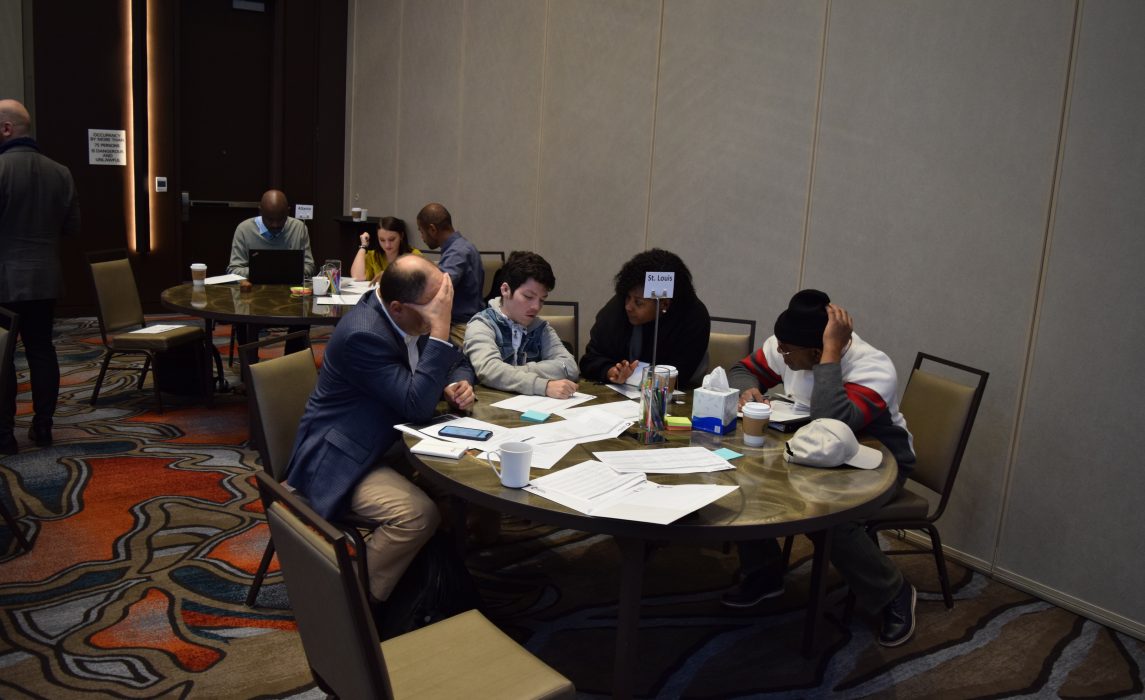Behind the Scenes of Guiding Opportunities
Everyone on St. Louis’s Guiding Opportunities team has an important role to play.
Daffney Moore, the Chief Opportunity Zone Officer, focuses on reaching out to the community, while Matt Bauer, Opportunity Zone Project Manager, works on real estate and business development.
The two Cities of Service AmeriCorps VISTA members on the team, Lionel Ward and Joshua Milligan, also bring different life experiences and skills to their work as community engagement specialists. They all share a commitment to fostering equitable development in St. Louis.
The team is modeling the kind of collaboration necessary inside—and outside—city hall to make Opportunity Zones a success. One of the goals of the program is to bring together stakeholders, share skills and expertise, and create a common vision for development and investment.
“One of my goals is to get everyone to start communication with each other,” said Moore. “A lot of the organizations are working in the same radius but they’re not all collaborating.”
The Federal Government enacted the Opportunity Zone program as part of the 2017 Tax Cuts and Jobs Act to stimulate economic development and mobility in low-income communities. The act encourages investment with tax incentives.
There is the risk that Opportunity Zones could attract projects like self-storage facilities that produce few permanent jobs and don’t meet community needs. So the St. Louis team is setting forward a clear strategy and doing everything they can to attract investors who want to help the community, and to bring residents, investors, and businesses together to encourage investments that meet the needs of the community.
“One of my goals is to get everyone to start communication with each other. A lot of the organizations are working in the same radius but they’re not all collaborating.”
This work has already begun. The city established two working groups: the Opportunity Zone Working Group and a Community Engagement group. The first now meets regularly and includes committees focused on funding and potential investors and identifying potential projects.
The Community Engagement group is relatively new and had its first meeting on February 25, with the Cities of Service AmeriCorps VISTA members taking the lead. Around 20 people attended, representing grassroots and nonprofit organizations, small business, and other stakeholders, including many who were new to the Opportunity Zone process.
“People who came were genuinely interested,” said Ward. “There were so many questions, which is really good.”
The team is also working closely with the Vacancy Collaborative, a coalition of businesses, nonprofit and community organizations, and city agencies aimed at fighting blight and vacancy in the city. Moore also recently connected with the Heartland Black Chamber of Commerce.
“People are excited about the opportunity to work together,” said Moore. “They’re willing to work with the city and want to see what the city is going to do.”
The city’s main role at this point is convener and connector, bringing together stakeholders to help match investments to community needs. Much of the work is about putting everyone in a room together.
“People really want the Opportunity Zones to make some needed impact,” said Moore, “especially on the north side. There is so much vacant property and people are hoping that the Opportunity Zones will bring about some real funding to help stabilize those areas.”
“A lot of those areas are food deserts, business deserts, with high vacancy. Some of them have higher crime,” added Bauer. “The Opportunity Zone program and the resources from Rockefeller and Cities of Service have allowed us to take a microscope to what’s going on in these areas.”
Lionel Ward was born in north St. Louis, and his son and grandsons live there. He was a real estate salesman and came to city hall to learn more about Opportunity Zones. That’s how he first heard about Guiding Opportunities. It aligned with his interests, and he became a Cities of Service AmeriCorps VISTA member to get more people involved.
“A lot of those areas are food deserts, business deserts, with high vacancy. Some of them have higher crime. The Opportunity Zone program and the resources from Rockefeller and Cities of Service have allowed us to take a microscope to what’s going on in these areas.”
His personal history with the area has been an asset as he connects with other residents.
“I really work hard to help them see the benefit of the program,” he said. “There’s a lot of vacancy and blight in the northside. People feel disconnected. I personally think it could be a game changer.”
Fellow Cities of Service AmeriCorps VISTA member Joshua Milligan also grew up in the St. Louis area and has lived in the city for years. Though Lionel is in his 60s and Joshua is early in his career, they both care deeply about the city and seeing it thrive.
“I’m working toward explaining the program in a way that’s jargon-free and understandable and accessible,” said Milligan. “I’m excited about doing more community outreach.”
There are 27 Opportunity Zones in St. Louis, and the city has chosen to focus on six that need the most support. The tax breaks they offer are one tool among many to encourage development and support small businesses.
“We’re trying to connect [small businesses] with people who can help,” said Ward. “Help them develop the projects and get started.”
The work of the AmeriCorps VISTA members and technical assistance support from Cities of Service and The Rockefeller Foundation gives the city time, personnel, and funds that will allow it to fully develop its strategy, convene stakeholders, and ultimately spur investment that has the potential to meet the needs of the community.
The program is still in its early stages as they explore possibilities and share ideas, but the team is enthusiastic about the future and the role that each of them will play in making a better St. Louis for all.
“We hope to motivate the community and businesses,” said Moore. “There is excitement in the air.”


